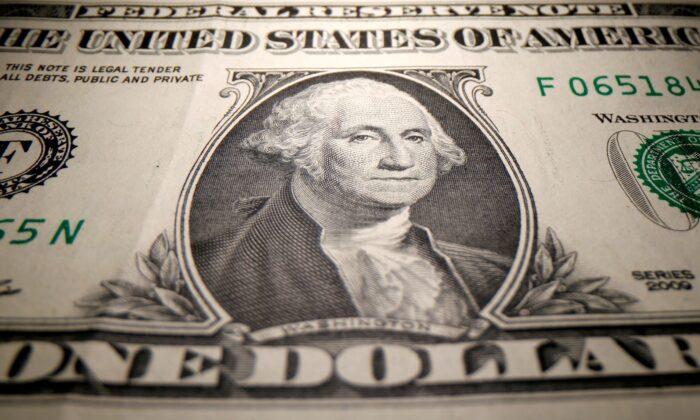LONDON/NEW YORK—The dollar rose against major peers on Wednesday, snapping three days of weakness, after U.S. consumer prices surged at their highest rate since 1990 and fuelled fears inflation could prove stickier than Federal Reserve expectations.
The consumer price index rose 0.9 percent last month after gaining 0.4 percent in September and in the 12 months through October, the consumer price index accelerated 6.2 percent, the U.S. Labor Department said on Wednesday, while analysts expected on average the rise to be limited to 5.8 percent.
The Fed last week restated its belief that the current inflation surge is transitory, but many investors fear that underestimating price increases could prove to be a costly policy mistake.
At 1002 EDT (1502 GMT), the dollar index, which measures the greenback against six major currencies, was up 0.31 percent at 94.2470 after reaching a high of 94.440 immediately after the data was released.
“It’s a pretty shocking number, shockingly robust ... Housing inflation tends to be very persistent. If it’s running at 3.5 percent year-over-year, high total CPI inflation is not likely to prove transitory,” said Greg Anderson, global head of foreign exchange strategy at BMO Capital Markets in New York.
“Markets are pricing in more Fed rate hikes as a result of this number,” he said.
Anderson noted that one of the most noticeable reactions to the news was the Mexican peso’s decline against the dollar, which was last up 0.27 percent after touching its highest level against the peso since October 29.
Against Japan’s yen the greenback rose 0.7 percent to 113.6750 yen after Tuesday touching its lowest point against the yen since Oct. 11.
The euro fell 0.32 percent to $1.1559.
Hammered last week after the Bank of England’s surprise decision to keep rates unchanged, sterling was last down 0.30 percent at $1.3518, but held well above Friday’s more than one-month low of $1.3425.
The Australian dollar was up 0.04 percent against the greenback at $0.7383 while the New Zealand dollar was down 0.29 percent against the U.S. dollar at $0.7108.
“What do these numbers say? Simply that inflation is going to be long-lasting and structural inflation has picked up speed,” said Peter Cardillo, chief market economist at Spartan Capital Securities In New York.
“The bottom line is that this is going to be a real challenge for the Fed in the coming months and suggests that inflation has not peaked,” he added.
Data already showed on Tuesday that U.S. producer prices increased solidly in October, driven by surging costs for gasoline and motor vehicle retailing, suggesting that high inflation could persist.
In cryptocurrencies, bitcoin jumped after the U.S. inflation data and was last up 1.5 percent at $68,289.26, below its all-time high of $69,000.00 marked earlier in the day.





